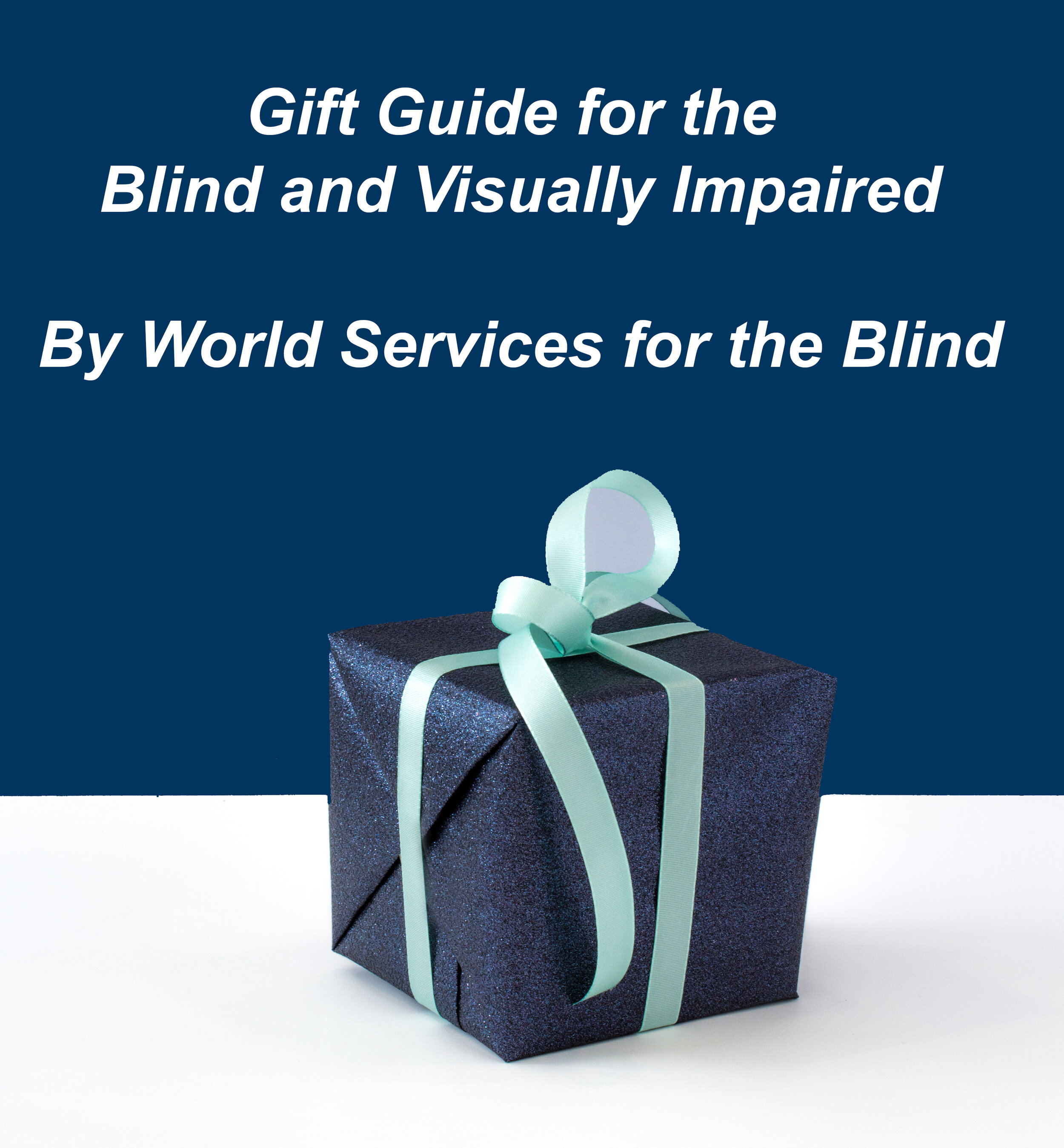Gift Guide for the Blind and Visually Impaired
/image of a wrapped present with blue wrapping sparkly paper on a blue and white backdrop. white text that reads “gift guide for the blind and visually impaired by world services for the blind”
Gift Guide for the Blind and Visually Impaired
With the holidays right around the corner, we’re bringing you a gift guide for the blind and visually impaired! If you’re looking for a present for someone who is blind/visually impaired or you’re looking for a few things to add to your wish list, we’ve got you covered! We also have a wide range of prices and categories for everyone on your list!
Small gifts and gestures with a big impact
Braille cards
At the beginning of the year we featured these amazing Quilled cards with braille! If you’re looking to send a holiday card, why not grab a braille holiday card for one for your blind and visually impaired friends?
Offer a ride
A gift doesn’t always have to cost money. If you can drive, offering your blind or visually impaired friend a ride can have a huge impact.
Help a friend sign up for Libby
Another free gift idea! Do you have a friend who loves to read? The Libby app is through your local library where you can download ebooks for free. Small gestures can have a huge impact, and helping someone who maybe isn’t as technology savvy download and use the Libby app is a great gesture.
Gift Cards
Uber gift card
An Uber gift card is not only practical, but it is something you know your blind or visually impaired friend will love!
Audible Gift membership
For someone who loves a good audio book, you can’t go wrong with an Audible Membership. With a monthly subscription, you get an audiobook credit each month. And they have almost every book you can imagine!
Technology
Google home
One product that we love at WSB – a google home! Google homes are great to make your entire house more accessible. We talk more in depth about how to use a Google Home in your kitchen in this post. You can go with a google home mini for a more affordable option as well.
Tiles
We’ve talked about Tiles a few times on the WSB blog, but they are certainly worth a mention on the gift guide! Tiles attach to any item and then you use an app on your phone, when triggered, that creates a beeping sound on your item to help find it! We love Tiles for traveling or even trying to find your keys!
Charging bank
As people who are visually impaired and blind, we use our phones a lot. A portable charging bank is the perfect gift to ensure you never run out of battery.
Sunuband
A more extravagant gift but if you’re looking to give someone a new piece of assistive technology, a SunuBand is a great choice. If you’re feeling charitable, you can even gift a SunuBand for those in need! SunuBand is a wearable device that can help detect objects in the way. We even have a great tutorial on how it works here:
Bluetooth headphones
Bluetooth headphones are everywhere these days, and we can see why! They are the perfect tech accessory for those who use VoiceOver, JAWS, or NVDA. With Bluetooth headphones, you won’t have to carry around clunky wired headphones. And they come in a wide variety of kinds now from airpods to over the ear headphones.
iPhone SE
Another gift on the pricey side but an iPhone SE is the perfect gift for someone in need of a new phone. iPhones are accessible right out of the box! (Simply go to settings > accessibility and turn on VoiceOver or enlarge the text or you can simply ask Siri to turn on Voiceover). And if you know someone who needs help learning about their new technology, be sure to check out our Online Fundamentals Courses! WSB offers an Assistive Technology fundamentals course that can help new assistive technology users.
Apparel
Eyeswear apparel
There are so many great Etsy shops, but one of our favorites is Eyeswear Apparel! The slogan is “Blindness Advocacy with a twist!” Eyeswear Apparel features a wide variety of items with great, funny slogans! The shirts feature a print saying with a different brailled saying underneath (which are normally very sarcastic and humorous!).
Check out our CEO, Sharon Giovinazzo, wearing one the shirts!
Sharon wearing a face mask with a halloween smile with a black sweatshirt that reads “blindness is a spectrum” with braille font underneath










